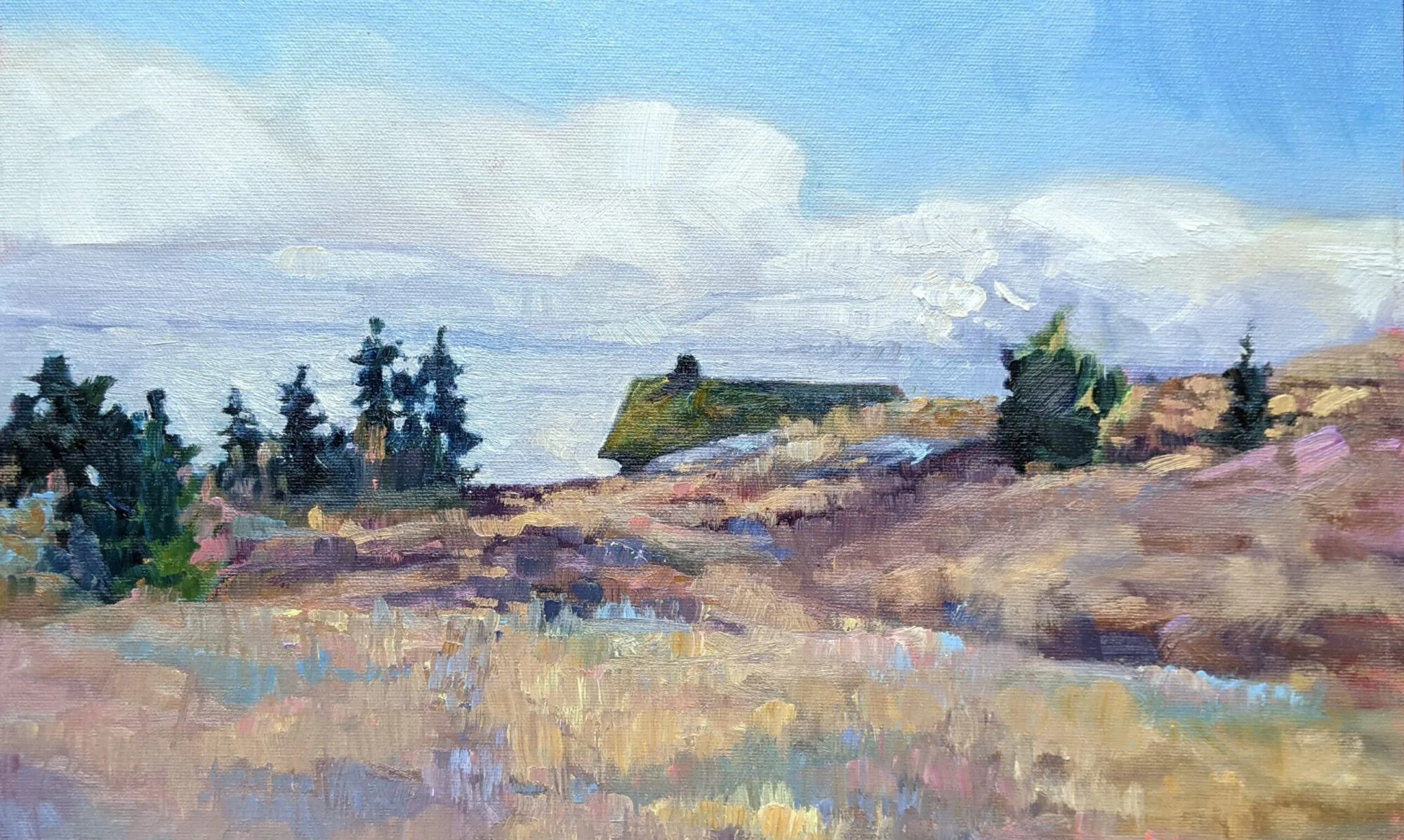When drawing bling, start with the mechanical measurements and work your way down to the details.
| Happy New Year! by Carol L. Douglas |
Student Samantha East noticed that I sometimes repeat blog posts. This is one of those times. As I jokingly said to Bruce McMillan in Friday’s comments, the lessons in painting are simple. It’s a question of when we’re ready to receive them. But to keep it interesting, I’m more interested in the reflections than the round shapes this year, although both are important.
I like shiny baubles, so I’ve asked my students to paint Christmas decorations this week. This post will give them a heads up on the lesson.
|
The ornaments we chose: a simple sphere for me and a globe-spider for Sandy. |
By now, Christmas decorating is in full swing. We’ve at least located the boxes and asked our families to help carry them down from the attic. (Good luck with that, by the way.) Find a simple, round, reflective ornament. That’s your subject for today.
Those of you who don’t believe in Santa Claus or haven’t found the ornaments can find a reflective spherical object to substitute. The back of a metal soup spoon will work just fine. In my example above, I used a plastic toy horn.
|
Noting the axes. |
Sandy Quang was my painting student in Rochester. She went on to get a BFA from Pratt and an MA from Hunter and now works at Camden Falls Gallery. She’s working on her MBA from University of Maine.
I asked her if she wanted to draw with me. Of course, she had her sketchbook tucked in her backpack. “Which one do you want?” I asked her. She chose the spider ornament.
|
We both added details. Mine were the ellipses on the collar of the ornament; Sandy’s were the beaded legs of the spider and her first markings for reflections. |
I wrote about drawing a glass dish, which is a series of ellipses on a central axis. A circle is easier to draw than an ellipse; it’s an ellipse that is symmetrical on all sides. A sphere appears to be a circle when it’s viewed in two dimensions. This is an unbreakable rule.
Both of us started with the axis of our drawing. For me, that was the vertical axis; for Sandy it was the axis holding her circles together. I mention this because when people say “I can’t draw!” they seldom realize how much of drawing is mechanical, simple measurement. It’s best to learn this from life, since the measurement has already been done for you when you work from a photo. You can easily work back from life drawing to working with pictures, but it’s harder to go the other way.
|
Marking out the outlines of our reflected shapes. |
Next, we both put the appendages on our spheres. For me, that meant measuring the ellipses in the collar. For Sandy, it was the beaded spider legs. Sandy was starting to note the overall areas of reflection in her spheres.
|
We both worked on shading next. I finished my shading with an eraser, Sandy couldn’t do that because her paper was too rough. |
Sandy and I chose different approaches in the next step, dictated by the paper we were working on. Because I had a smooth Bristol, I was able to blend my pencil line into smooth darks with my finger. Sandy could only work light-to-dark on the rougher paper she was carrying. That gives you the chance to see two different approaches to shading.
| Our finished drawings: mine on the left, Sandy’s on the right. From there, it’s just a hop, skip and a jump to painting them. |
Sandy has a shadow under her final drawing because the ornament was sitting directly on my coffee table. I put the reflection of myself in my ornament. Those final details were the fun and easy part of the drawing exercise.
All drawing rests on accurate observation and measurement. Get them right and the shading and mark-making is simple.
This post originally ran in 2017 and 2019. It’s been edited.













































